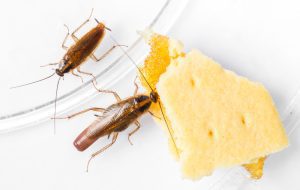BED BUGS CAN CAUSE ALLERGIC REACTIONS
By Chris Williams on March 20, 2018.
There are not many pests more disgusting than bed bugs given the fact that they literally feed on our life’s blood. Fortunately, bed bugs don’t spread any identifiable diseases with that feeding, but they can still make us sick. Turns out that bed bugs give off high levels of allergy-causing histamines in their droppings, or their “poop,” if you prefer.
If you or someone in your family has battled allergies, you’ve probably heard of histamines. Histamines are chemicals that are released by a person as part of an immune response to an irritant, basically resulting in an allergic reaction that can range from skin rashes to respiratory problems if inhaled.
HISTAMINES HELP BED BUGS FIND EACH OTHER
In the case of bed bugs, researchers in North Carolina discovered that the histamines serve a useful purpose for the bugs. These chemicals are found in the aggregation pheromone that bed bugs produce and use to attract and find others of their kind. The detection of histamines helps bed bugs find their way to the bedroom where other bugs are already occupying hiding places and breeding sites.

German roaches enjoying a cracker. Shutterstock
Allergen particles are present not only in pests’ droppings, but also in shed skins and their dead bodies. When insect or arthropod parts accumulate over time or when large numbers of pests are present in a site, allergen levels can be high and allergic reactions, including breathing problems, can result. You no doubt know that some people are allergic to dust mites and recent research has found that many inner-city children that live with cockroaches have high levels of asthma and allergies as a result (see Cockroach Allergen is a Very Real Problem).
The North Carolina researchers collected house dust from apartments that had bed bugs and apartments that did not. The histamine levels in the dust of bed bug-infested homes were at least 20 times higher than in homes without bed bugs. If those homes also contain children or others with allergy issues, a bed bug infestation becomes even more serious.
INSECT ALLERGENS CAN LAST FOR A LONG TIME
Histamines and other arthropod allergens can be very persistent once in an environment. Insects that spend their time hiding in cracks and crevices, such as cockroaches and bed bugs, are a particular problem since it is almost impossible to vacuum up or wash out their allergens from inaccessible places (see Cockroach Allergen Levels Remain Despite Efforts). In the North Carolina study, histamine levels remained high, even three months after the bed bug-infested homes received heat treatments to eliminate the bed bugs. And since bed bugs spend almost all of their time in bedrooms where people also spend a large portion of their day, the health effects can be even greater.
This is just another reason why it is so important to identify and control a bed bug (or cockroach) infestation early before the insects and their allergens build up in the home where they may continue to irritate residents for a long time to come.